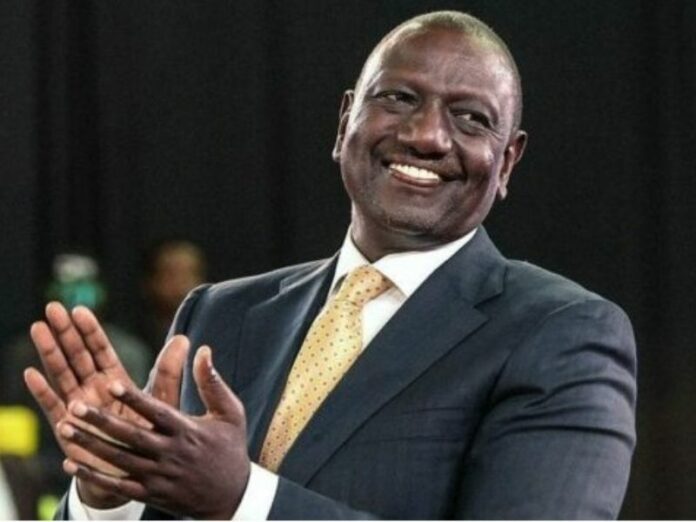For all their faults, or perhaps because of them, Kenyan politicians have always heeded the advice never to let a good crisis go to waste. In a country that has seemingly perfected the art of management by disaster, lurching from one potential calamity to the next, the political elite does not even need to wait for a crisis because it can just as easily manufacture one. And the last few weeks have provided an object lesson in how this is done.
Before delving into the current crisis, providing some background is in order. In 2010, Kenya adopted a new constitution, the culmination of over a quarter-century of struggle to tame its voraciously parasitic and corrupt political class. Influenced largely by the bloodletting that followed the disputed 2007 presidential election, the constitution sought to overhaul the country’s systems and create a straitjacket to restrain their psychopathic instincts in the hope of forestalling future disasters.
But it has achieved mixed results. Every presidential election since the constitution was promulgated has been disputed. In 2013, the Supreme Court, whose primary mandate is to adjudicate disputes around presidential elections, gave a widely panned judgement legitimising what many saw as yet another stolen election. However, though unhappy with the verdict, the losing candidate, Raila Odinga, nonetheless accepted it. Thanks to the constitution’s introduction of this mechanism for settling the dispute, Kenya avoided a 2008-style meltdown.
But by 2017, it was clear that the political class was gnawing at the constitutional restraints. Following another controversial win for the incumbent, Uhuru Kenyatta, Odinga was initially reluctant to turn to the Supreme Court for redress. He eventually joined in a case filed by civil society activists challenging the outcome and the court ruled in their favour. It was the first court judgement on the African continent to overturn the re-election of a sitting president. Kenyans saw it as proof of the constitution’s efficacy.
This moment of constitutional supremacy did not last, however. Kenyatta launched an attack on the court, demonising the judges and warning of a coming “revisit” ahead of a repeat of the presidential election. The rerun was held a month later, but, with Odinga boycotting, it was seen as a sham and the vote once again challenged in court.
Following an incident in which the then-Deputy Chief Justice Philomena Mwilu’s bodyguard was shot, the Supreme Court was unable to raise a quorum to hear a petition demanding the cancellation of the election results.
A later Supreme Court ruling that upheld that election was quickly rejected by the losing coalition and the country entered a period of political instability, violence and uncertainty which ended with the “Handshake” of March 2018, a power-sharing deal in all but name.
The “Handshake” and everything that led up to it essentially loosened constitutional restraints and legitimised political arrangements outside the constitution’s vision of clean and transparent electoral contests with clear winners taking up power and losers gracefully conceding. That vision had once again run up against Kenya’s much messier reality and this time, it had lost.
Today, much like in 2017, Kenya is in the messy aftermath of an election. This time, however, the vote is widely seen as the most transparent the country has had, a real contrast to the shady processes of six years ago.
Again, Odinga was defeated, this time against Kenyatta’s estranged deputy, William Ruto, another casualty of the Handshake. Again Odinga challenged the outcome in the Supreme Court. Again he lost.
But having freed itself from the constitutional straitjacket, the political class was not about to let a Supreme Court determination stand in the way of its politics. The lunatics were once again running the asylum.
Despite a dearth of evidence to support his case and a lack of public support, Odinga launched a programme of weekly public protests with nebulous and ever-changing demands. The aim was to bait the Ruto administration into an overreaction.
The obtuse and heavy-handed response from the government was as stupid and shortsighted as it was predictable. The police were sent to beat up and tear gas protesters, which led to three deaths and 400 injured, while thugs attacked Odinga’s company and invaded a farm belonging to his ally Kenyatta.
The violent scenes in the capital and a few towns in the west were enough to convince many that a political crisis indeed existed and it required a negotiated solution. The pressure led to an offer for talks from the Ruto administration which was quickly accepted by the Odinga team. Yet there is little clarity about what that crisis actually is, and what the talks would be about.
Perhaps due to the absence of an agreed agenda, the talks have already run into trouble. While both sides have picked negotiating teams, an insistence by Ruto that the talks be confined to parliament (which he controls) has seen Odinga threaten a return to the streets after the end of Ramadan.
Meanwhile, the country faces a very real economic and humanitarian crisis, with ballooning public debt, the rising cost of food, the government being unable to pay its workers, and up to six million Kenyans facing starvation.
While Odinga has paid lip service to the skyrocketing cost of living, demanding that the Ruto government he does not recognise work with him to lower it, it is clear that both sides are far more fixated on the contestation of power than on the increasingly miserable lives of their countrymen. And if history is our guide, it is far from certain that even a political deal will see them act to ease that suffering.
In 2008, faced with a worsening food crisis, the Government of National Unity, formed to stem the violence that followed the 2007 election, instituted a novel maize subsidy scheme.
Imported maize as well as stocks from the country’s strategic reserve were to be sold to millers at a discounted price in an effort to lower the prices of flour. However, the scheme was widely abused by politicians and government officials who, pretending to be millers, pocketed the subsidy and then sold the maize on to the real millers, further inflating its cost. By the time they had finished, 10 million Kenyans were starving.
So brazen was the looting that it prompted PricewaterhouseCoopers, which audited the scheme, to question whether the programme “was from the outset designed to fail and to provide a means for considerable financial exploitation at the expense of the state”. Ruto, who was the agriculture minister at the time, was accused of profiteering from the scheme and so were family members and associates of Odinga, who was the prime minister.
With this in mind, the hope that either side of the political divide would prioritise easing the suffering of Kenyans above its narrow interests is rather dim.
The real political crisis Kenya faces today is the same one it has had since independence. Its political elite was forged in the fires of colonial plunder and from its birth, the country has had to bear them as an affliction, as the cost of stability.
Some, like Charles Onyango-Obbo, one of East Africa’s most insightful commentators, see them as the reason why the country has avoided following many of its neighbours into anarchy and civil conflict. “Its corrupt and amoral politics [are] a high form of pragmatism and political common sense,” he wrote recently. “Every deal is possible. No betrayal is unthinkable. It is pagan, transactional politics at its worst – and best.”
But this is exactly the situation Kenyans had sought to extract themselves from with the 2010 constitution. The truth is, it is the “pagan, transactional politics” where “every deal is possible” that incentivise politicians to see their followers as fodder, and violence and mayhem as mere negotiating tactics.
It is what keeps Kenya always on the brink of disaster, its constantly starving and brutalised people taught to accept plunder and misery as the price of avoiding their neighbours’ fate.
Kenyans are ultimately faced with a choice: whether to lower their expectations and resign themselves to Kenya’s debased politics, or to continue along the frustrating road of trying to force Kenyan politicians into a new mould.
By Patrick Gathara
Source: aljazeera.com









